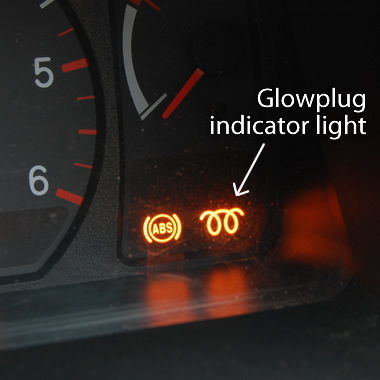It is one of these, it's a 2001, and it's the color of the one in the picture:

This is no shit: 60 mpg on the freeway. I've tested it. Seattle to Idaho and back on three-quarters of a tank of fuel. Maybe it's the low-rolling-resistance tires the dealer put on it. It's also VERY quick.
I did my homework before I bought it, and this is what I learned: Unwinterized diesel fuel gels - which means the paraffins dissolved in it turn solid and clog up your fuel system - at 15 degrees Fahrenheit. This temperature is the "gel point." If I was to fuel my car in August, park it until January and try to start it, the untreated fuel in its tank would turn into a product that looks like vaseline but smells like diesel. When the average temperature in the area drops below a point each state sets on its own (but it's no more than 40 F), fuel dealers are, by law, required to add a chemical to diesel fuel that reduces the gel point to -40 C - the freezing point of gasoline. In short, if it's too cold outside to start a diesel in 2016, it's too cold outside to start any engine.
Idling a modern diesel for long periods of time will damage it. Modern diesels are all turbocharged; they need the pressure to pack enough air into the cylinders. A turbo is driven by exhaust gases. If there's not enough exhaust pressure to spin the turbo, the engine won't get enough air to burn the fuel properly. This creates soot...which winds up in your oil...which clogs your oil filter...which activates the bypass valve and causes unfiltered oil to run through little bitty passages like the ones in his $1674-plus-labor turbocharger. (Yes, that's what they cost...rebuilt. I don't even want to think about what a new one is worth!)
This is how to do a start-of-day startup on a diesel engine when it's really cold outside:
Your glowplug light:

Glowplugs are cylinder heaters. Diesels use heat for ignition. The faster you can get the cylinders warmed up, the faster the engine fires up. This light illuminates while they're on.
So...step 1 is to make sure everything in the rig that might draw electricity is turned off. Turn off your radio, turn off your headlights, turn off anything that draws power.
Step 2 is to turn the key to "on." This light will come on, and a few seconds later it will turn off.
Step 3? Turn the key off and wait five seconds.
Step 4: Turn the key "on" and wait till the glow plug light goes off. Then crank the engine. It will fire right up.
If he's REALLY paranoid about gelling fuel, have him buy two pints of Power Service Diesel 911 and a jug of Howes Diesel Treat. Diesel 911 is an "emergency fuel degeller" and it works great. If the fuel gels, you remove your fuel filter, dump it out, and refill it with a 50-50 mix of Diesel 911 and ungelled fuel. This should take most of one pint; diesel fuel filters are pretty big. (You will NOT be doing this on a Volkswagen, because you can't open a VW fuel filter. His Powerstroke has a filter you can open.) You pour the rest of it in the fuel tank. Then you wait five minutes and start the engine. You then pour some Diesel Treat into the fuel tank to prevent it from gelling again. He will probably trade the truck in with two unopened pints of Diesel 911 behind the seat. Fuel gelling is, or at least used to be, a huge problem on farm equipment - farmers would fill their equipment during the summer and when it got to be winter the wrong fuel was still in the machine. If you're driving the vehicle every day, by now you've got winter diesel in your rig and you're fine.
So please ask him to stop. He's doing his truck and the environment nothing but harm.
 = new reply since forum marked as read
= new reply since forum marked as read

